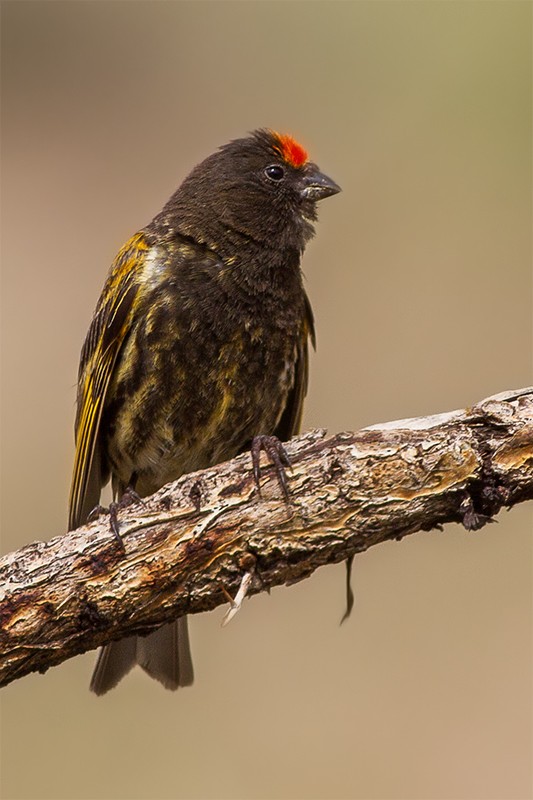Fire-fronted Serin
A species of Eurasian Serins and Canaries Scientific name : Serinus pusillus Genus : Eurasian Serins and Canaries
Fire-fronted Serin, A species of Eurasian Serins and Canaries
Botanical name: Serinus pusillus
Genus: Eurasian Serins and Canaries
Content
Description General Info
 Photo By soumyajit nandy , used under CC-BY-SA-2.0 /Cropped and compressed from original
Photo By soumyajit nandy , used under CC-BY-SA-2.0 /Cropped and compressed from original Description
The red-fronted serin or fire-fronted serin (Serinus pusillus) is a small passerine bird in the finch family Fringillidae. It prefers high mountain regions and is 11–12 cm long. This bird breeds in the Caucasus and the higher mountains of Turkey and Iran, with vagrants occasionally reaching the Greek Eastern Aegean Islands in winter. This bird is also found in Ladakh and other parts of the Indian Himalayas. Outside the breeding season, it occurs in small flocks, typically seen searching through thistle patches. It is a popular cagebird, and escapees from captivity are occasionally found throughout Europe. The bird is variable in plumage, with adults resembling very dark redpolls. The foreparts are sooty and the forehead is red; juveniles have buff-brown heads. The call is a rapid, shrill "titihihihihihi", resembling that of a Linnet. The bird will breed in captivity and thrives on a diet of canary grass seed, millet, and other small seeds. They bathe daily if water is accessible. 
Size
13 cm
Nest Placement
Shrub
Feeding Habits
Fire-fronted Serin consumes seeds, shoots, fruits, and insects, particularly favoring seeds from various alpine plants and trees. Fire-fronted Serin forages primarily on the ground but also feeds on plants and trees, displaying adaptive behavior like hanging upside-down. Small groups up to large flocks may forage together, often with other finch species.
Habitat
The habitat of fire-fronted Serin comprises montane and submontane forest edges, thriving in diverse tree areas with species like birch and pine. These birds also inhabit open hillsides with barberry scrub, alpine meadows, and upper steep valleys. During the non-breeding season, fire-fronted Serin descends to lower elevations, frequenting orchards and gardens, river valleys, and rocky outcrops near agriculture.
Dite type
Granivorous
General Info
Feeding Habits
Bird food type
Species Status
Not globally threatened.